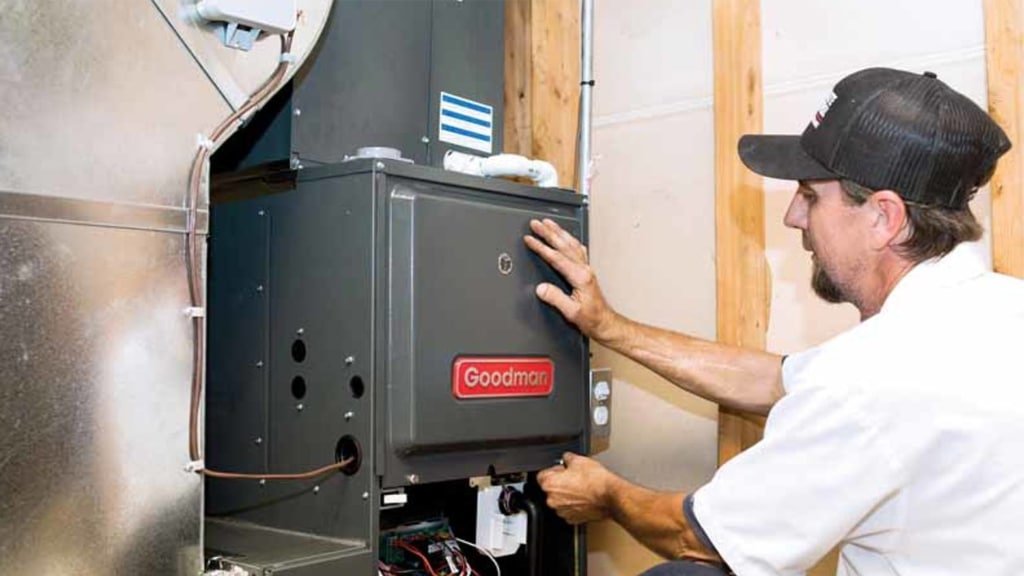Furnaces are a necessary evil during the winter months. They keep us warm and toasty, but it can be a massive headache when they stop working. If your furnace is not producing heat, there are a few things you can do to troubleshoot the problem and get it up and running again. Even while most businesses provide emergency furnace repair and maintenance services around-the-clock, consumers may save money by doing some simple troubleshooting on their own.
This article will discuss some of the most common causes of a malfunctioning furnace and provide tips on fixing them. So read on to learn more!
The Furnace is Not Producing Heat
Some of the reasons your furnace might not be producing heat include:
Dirty air filter: A dirty air filter is one of the most common reasons a furnace stops working. The air filter traps airborne particles like dirt and dust that could damage the furnace. When the air filter becomes clogged, it restricts airflow and prevents the furnace from operating correctly. To fix this problem, remove the air filter and clean it with soap and water. It would be best if you also vacuum the area around the furnace to remove any dust or dirt that may have accumulated.
Thermostat issues: Thermostat problems are another common reason a furnace stops working. The furnace will not turn on if you incorrectly set the thermostat. To fix this problem, check the thermostat to ensure you set it to “heat” mode and set the temperature correctly. You may also need to replace the batteries in the thermostat if they are low.
Turned off furnace switch: Believe it or not, one of the most common reasons a furnace stops working is when you turn off the switch. The switch is usually near the furnace, so check it before troubleshooting any other issues. If the switch is turned off, turn it to the “on” position and see if the furnace starts working.
The Furnace is Not Turning On
On a chilly night, a furnace that doesn’t provide heat might risk your house if you don’t fix it immediately. Here are some easy DIY repairs you might try before consulting an HVAC expert:
Power: Major appliances often have their circuit breaker in most homes. Thus, the breaker sometimes trips. Check that the furnace’s electricity is on. If so, check the breaker’s control panel and look for burn marks. The presence of burn marks might indicate an internal electrical short.
Thermostat: Furnaces have a thermostat that turns the unit on and off. Furnaces also have an emergency switch located near the furnace. The emergency switch prevents the furnace from turning on if there’s a fire. If you don’t see a switch, check your furnace’s documentation or look for a label near the control panel. The label might say “emergency switch.”
Pilot Light: Furnaces have a pilot light that ignites the burners. If the pilot light goes out, the furnace won’t turn on. To relight the pilot light, follow the instructions in your furnace’s documentation or on a label near the control panel.
Blower Motor: Furnaces have a blower motor that circulates air through the unit. The furnace won’t turn on if your furnace has a broken blower motor. To test the blower motor, turn the power to the furnace and set the thermostat to “fan.” If the blower doesn’t come on, it needs replacement.
Frequent Cycling On and Off
Not only is a heating system that alternates between on and off irritating, but it might also cause a jump in your electricity costs. By looking at the filter, you can solve this issue. A blocked filter impedes the correct airflow. Additionally, it sets off the furnace’s start-up signal on the thermostat.
After replacing the filter, if the issue still exists, there can be an issue with the thermostat’s wiring. Check for any signs of fraying or disconnections. If you don’t feel confident in your repair abilities, call a professional to take a look.
Furnace Taking Longer Than Usual To Heat Up
It can often be due to low natural gas or fuel oil levels. Try resetting the furnace; if this doesn’t work, contact your local energy provider. They will be able to help you determine if there’s an issue with the gas or fuel oil lines.
Another potential cause for this problem is a clogged burner. Furnaces have a filter that catches lint and other debris. If the filter becomes too full, it can restrict airflow and cause the furnace to take longer to heat up. To clean the filter, remove it and vacuum it out. You should also check the blower motor to ensure debris is not clogging.
Conclusion
A furnace that isn’t working can be a major inconvenience, especially during winter. However, by troubleshooting the problem and trying some simple repairs, you might be able to get your furnace up and running again in no time. If you are still having problems with your furnace, or if you don’t feel confident in your repair abilities, it is always best to call a professional. They will be able to diagnose the problem and make the necessary repairs to get your furnace up and running again.









